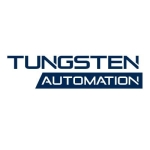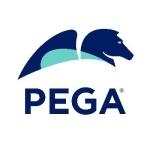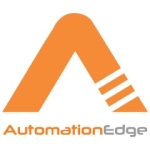Initially, when we started, we were using it for back-office automation. The solution has definitely evolved. We're focusing on implementing customer and experience-facing use cases. Time is the most valuable piece, and that's how we measure the success of automation now.
The solution is helping our customers save time.
We were trying to solve a few different challenges with Automation Anywhere. For example, during the pandemic, gaining bandwidth was huge. Hiring while shifting to remote was challenging. There was such an accelerated use of the technology during the pandemic. Having to integrate with existing and older systems was key. That flexibility to work with other applications and other aspects of the platform really drove our decision to adopt more and more of the solution.
We've noticed time savings. The time saving varies. We look at how much value the customer gets. We've noticed time savings of up to 40 minutes, based on wait time and verification delays. Sometimes, we might only be saving a minute or slightly less. However, this is a slightly higher volume scenario where something needs to get done by the end of the day. It offers a broad range of time savings. For example, if someone calls in for the healthcare side to get benefits verified. Typically, that would take 45 minutes in terms of gathering information and validating information and prep work both before and after. Now, we can do that autonomously in a matter of minutes.
Within the processes of automation, robots learn differently than humans. They are very interactive and literal. Diving into that tribal knowledge that makes an organization unique was really what we had to do differently. For example, if you tell someone, "Go check your email," they know what that means. With a robot, you have to translate that action into a specific language, and that was the challenging part from the process side.
Copilot is great at bringing agents and humans into the loop. Creating that AI assistant that can almost tell someone the next step, that suggested intelligence, is helpful. Getting the data an organization has over to a customer very quickly is effective with Copilot. Simple queries that may take 15-20 seconds to answer, you still have to, for example, to find the number, make the call, et cetera, and suddenly that 20 seconds if two minutes longer. Having that information ready in a conversational way is where generative AI can really help compress time.
There's a lot of human involvement in the workflow. Automation Anywhere does a fabulous job of integrating users into the workflow. That's important. You wouldn't be able to automate with just the technology. Teaching users to interact in a relatable way with relatable interfaces has had a big impact on the business users' side.
Understanding the technology is very easy based on the way it is positioned. There are a lot of great resources out there.
How much time it takes to get comfortable using the automation process varies. You need to gain the knowledge of understanding ways to do things, then have the practical knowledge of how to apply; then, there's a third piece of constantly improving, monitoring, mentoring, and iterating. That piece is ongoing.
Copilot is helpful for pure-play back-office stuff. From the call center side, it's integrated and becomes available as an option as well. Any document processing is great for Copilot.
With the new enhancements, it's very easy to integrate. It integrates well with infrastructure solutions and testing products, as well as data and analytics.
The integration with workflows has only been enhanced over time.
In terms of document processes, there is some uncertainty between structured and unstructured. However, the intelligence applied cut down time by 50% or more. That's in time to do the work, not necessarily accuracy.
In terms of APIs and applications, when automation first came out, they shunned APIs. That was a challenge due to the fact that, when you sold it to an organization, they asked why it would be done a certain way when they already had an API. Now, it's making it easier to use solutions. You can bring in your tool kit and create synergy.
Copilot has helped us increase productivity. It's a new feature, so it's hard to quantify. I do see the established value increasing exponentially.
The product has helped us free up staff time. The biggest thing we measure is experience. If it's moving towards higher-value projects, it's great. However, so is going home and not taking work home with you.
If we look at the concept of bringing automation to a broader user group in an organization, the focus right now is on how to build it properly. We're building it out with instruction manuals and working to make it more user-friendly. We need to do a lot of work from the perspective of education. The messaging is essential. Also, figuring out the platform so that users know where they need to interact. We're pointing users towards that and giving them the help to do that. The messaging and education around how to leverage the platform need to be more precise. Understanding what the benefits are going to be needs to be very clear.
When you are implementing it initially, it's challenging as there's a lot of change management. That's where the lessons need to be learned. That curve is hard to overcome.
There are more challenging integrations that should be left to more expert users.
We've been using the solution since 2015. It's been about eight years now.
Technical support is good. You don't have to reach out to them very often. The new layers are great. The services you get alongside the solution are helpful, and combining that with bug fixes, et cetera, makes it fit for purpose for all uses.
I'm familiar with other options. The difference is the people side of things. The team outside of the technology, the people putting it together, is what makes the solution itself better.
It's important that Automation Anywhere is easy to use. There's an intimidation factor when you present people with a massive ecosystem. It's practical and fit for purpose from the outset, yet very flexible and versatile.
I was involved in the initial setup.
If you start out pretty simple, the challenges that cause delays are more from change management and security and clearance. That's outside of the platform itself. That takes 80% of the time.
You can stand it up in a couple of days, however, it can sometimes take a month for reasons outside of the platform.
You can get things going within a week, which you can iterate on pretty quickly.
Maintenance depends on usage. There are tools where you can build automation to provide alerts. You need someone who's at least slightly dedicated to that. Once you get bigger, you'll need a dedicated team, and then you have to figure out how to prioritize your time, in terms of evangelizing it, making more automation, et cetera.
The pricing is okay. We've established the value of bringing it into our organization. For scaling, you can't beat the price of adding a robot that provides basically unlimited scale.
Our strategy when it comes to automation and AI (and generative AI) right now, as with any technology, there's a lot of buzz. Historically, we've had periods of punctuated innovation, like automation in general, that was a real change in how organizations did business. Right now, we're seeing an iteration of that with generative AI. We have the foundation down with these platforms. Our strategy is the same: understand the technology from the people's side. We're the ones using the technology. You can't blame a piece of technology - it's still on us. We need to establish it. At the end of the day, we need to own it. Technology isn't a silver bullet. However, if we approach it right, we'll have all the success in the world.
I'd rate the solution nine out of ten.



















